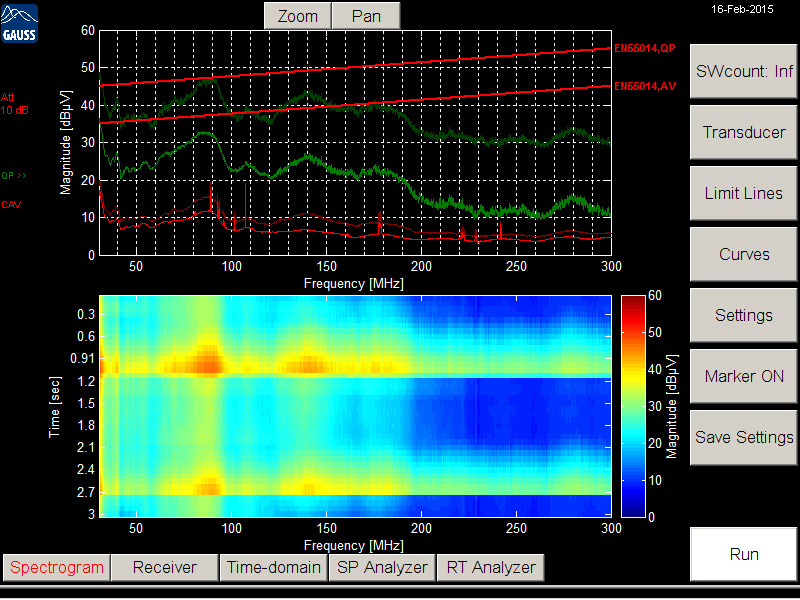Measurement of disturbance power is carried out with an absorbing clamp in the frequency range of 30 MHz – 300 MHz. It is an alternative test method to radiate emission measurements. Therefore, the maximum emission has to be found and recorded which is received by the absorbing clamp moved along the slideway. Usually a frequency search is performed in the first step. The following measurement of the maximum is performed with the Quasi-peak detector at single frequency points. Typically the test receiver was set to a single frequency and the absorbing clamp was shifted till the maximum emission was found.

Compared to this time-consuming test procedure, the maximization at all frequency points over a bandwidth of 30 MHz- 300 MHz can be carried out now by the TDEMI X receiver instantaneously with a full gapless real-time bandwidth of 325MHz (Option QCDSP-UG) from GAUSS INSTRUMENTS. CISPR-Average detector, as well as Quasi-peak detector are running in parallel and are measured simultaneously over the whole frequency range at once, and are displayed in real-time during the measurement. The measurement is performed by the receiver of the TDEMI X series in the real -time spectrogram mode, which is full CISPR compliant, and with MaxHold traces activated. The absorbing clamp is continuously moved over the full length of the slideway and the measurement of disturbance power is completed in approximately 10 seconds.
Thus, various operating modes of a device-under-test can be measured in a very simple and highly efficient way. The former time-consuming and complex pre-scan/final scan test procedure is not needed any more. Also the comparison to the limit line as well as the documentation and reporting of the test results is performed automatically via the integrated report generator (Option RG-UG) and saved as a Microsoft Word .doc file. By applying the frequency mask trigger the limit line is compared even during the measurement and is trigged automatically if the limit is exceeded.